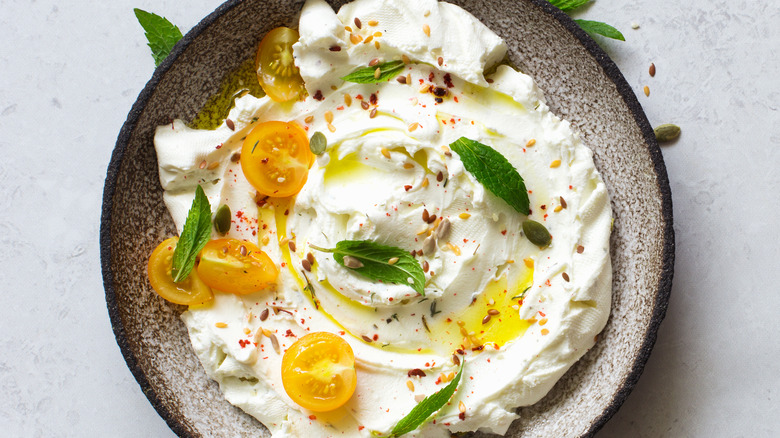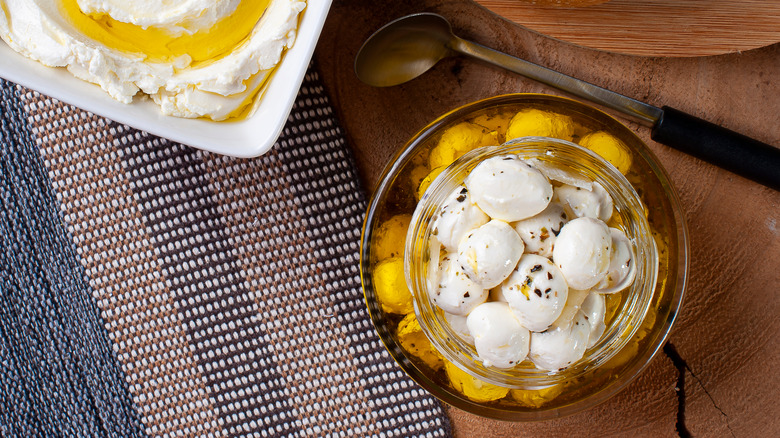Why You Should Be Eating More Labneh
It's soft, it's creamy, and it has an addictively tasty tang. If you haven't guessed what we're talking about yet — it's labneh. A staple in the Middle Eastern diet, the dish is quickly becoming a popular snack in North America. Aside from its unique flavor and texture profile that's quite unlike anything else, there are a bunch of reasons why you should be eating more labneh.
Typically made from cow's (but sometimes even goat's) milk yogurt, Serious Eats explains that labneh consists of straining the liquid from full-fat plain yogurt through a cheesecloth. Once the liquid has been drained, what's left behind is an ultra-thick, cheese-like cream similar to cream cheese or sour cream. Interestingly, the longer you let the yogurt strain (think: hours or even days), the more firm the labneh will become. At that point, it's ready to eat.
While you can easily find labneh in grocery stores, making your own is super simple. Plus, it'll leave you with leftover liquid whey, a versatile ingredient in its own right. Rich in gut-boosting benefits, Bon Appétit shares that this leftover whey can act as a natural fertilizer for plants, a probiotic beverage, a brine for meat, and a secret ingredient to provide pungency in any dish.
Labneh has both probiotics and versatility
The lusciously rich labneh has innumerable uses, both as a superfood and a versatile ingredient. Along with containing a generous amount of protein (without excessive calories), Healthline notes that labneh is loaded with vitamin A, calcium, potassium, phosphorus, and magnesium. But it's the probiotics in labneh that are especially noteworthy, as they can support digestion and immunity function, manage cholesterol levels, and even improve skin health.
A fermented milk product, labneh can also be lower in lactose, reports the National Library of Medicine. Much of the whey and lactose are removed during the straining processes, which can make for less tummy trouble. However, those with dairy allergies should still steer clear of labneh, or seek out non-dairy and vegan alternatives.
Now comes the fun part! Labneh can be delicious as a dip for crudités or as a spread for wraps, sandwiches, and bagels — but why stop there? Given that its smooth texture and tart flavor can be a base for both sweet and savory dishes, the uses for labneh are innumerable. Cooking Light suggests stirring some into oatmeal for added creaminess, stuffing dates for a protein-packed snack, whipping labneh into omelets, or even making cheesecake. You can also use it as a dairy substitute for recipes that call for cream cheese or sour cream.

